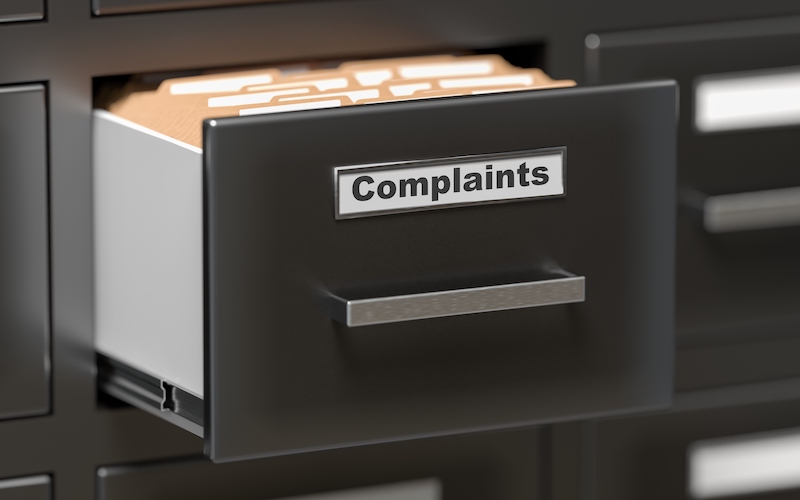
Scholar examines the institutional review board process for resolving disputes in human subjects research.
With over 340,000 ongoing human research studies registered in one U.S. federal agency’s database alone, it is no surprise that many Americans participate as test subjects in scientific studies. But what happens when participants in any of these studies complain that the research design did not protect their confidentiality or that the researchers failed to follow proper protocols?
The answer is not clear. Federal and state regulations do not address the process for resolving disputes between research subjects and researchers—leaving institutes to use their own institutional review boards (IRBs) to resolve these conflicts.
But one scholar argues that institutions need to improve their internal dispute resolution system to give participants clarity on the process and address research complaints more fully.
In a study published in a leading health law and policy journal, Kristen Underhill of Columbia Law School interviewed researchers and other individuals involved with IRBs at hospitals and research institutes. Underhill found that institutions that host studies with human subjects provide little publicly available information about how IRBs use internal dispute resolution systems to address research participants’ complaints.
The IRB framework initially developed after federal regulations gave IRBs the authority to oversee research protocols and approve research projects. Underhill explains that federal and state regulators, as well as accreditation organizations, establish general rules requiring universities and institutes to create dispute resolution systems and policies. But beyond basic requirements, Underhill says that IRBs have extensive flexibility to create their own procedures to handle disputes between participants and researchers.
Although participants can try to access the legal system instead of an institute’s IRB, research participants and the institutions sponsoring research find that it is difficult to bring a case in court, Underhill argues. Courts often reject research disputes because the complaints may not involve a legal issue. The legal system also disadvantages research institutions by imposing costs that could be used to further research initiatives, Underhill argues.
Without the option to go to court, participants and research staff must rely on IRBs’ internal dispute resolution systems.
But Underhill expresses concerns about the current IRB framework. Based on interviews with the informants, Underhill identifies four reoccurring issues that institutes need to address.
Informants said that from a practical standpoint, research participants cannot access the current IRB dispute resolution process. Underhill says that the informants indicated that research participants do not file complaints because participants are unaware that the dispute resolution process exists. Participants may also be afraid to complain if they are enrolled in an ongoing trial because they want to continue to receive care, Underhill noted.
Informants also complained that IRB staff have not received training to address disputes properly when they do arise. Furthermore, Underhill says that IRBs do not have access to other institutions’ policies even though this information could be used to create training resources.
The informants also indicated that the current framework does not provide a neutral setting to resolve disputes. IRB members may have ties to the institute and thus be unable to provide an unbiased resolution process, Underhill argues.
Although the dispute is usually between the participant and research staff, Underhill says that “IRB professionals are aware of their role in protecting their institution throughout the complaint resolution process.”
Informants also suggested that IRBs’ flexible procedures can lead to inconsistent decisions. Underhill notes that informants were concerned that IRBs do not consistently use the same procedures to resolve conflicts.
Even though Underhill recognizes informants’ concerns with the current IRB framework, she argues that the existing system provides advantages over government regulations.
Without federal and state regulators imposing strict rules, IRBs can tailor their processes to the particular complaint. Underhill says that the lack of standard procedures allows IRBs to involve additional “unforeseeable parties that may have a stake in the events or their resolution” in the dispute resolution process.
Including parties beyond the researcher and participant ensures that there are different perspectives involved in forming a resolution—which can also improve the system’s legitimacy, Underhill argues.
Establishing uniform federal or state regulations would prohibit the current flexibility and decrease efficiency, Underhill suggests. According to Underhill, a formalized process would waste resources by requiring IRBs to follow comprehensive procedures when a particular dispute could be resolved by shortcutting the formal process.
Instead of a uniform dispute resolution system, Underhill argues that IRBs should modify their existing frameworks to address informants’ concerns.
Underhill recommends that IRBs consult research participants when designing or modifying their dispute resolution procedures. If IRBs listen to participant feedback, institutions might be able to design systems that are more accessible to research participants, Underhill says.
IRBs should also verbally explain the dispute resolution process when participants first agree to partake in a study, Underhill argues. This modification would better ensure participants’ awareness of the dispute resolution process than the current system, where information about the dispute resolution process is often buried in complex forms.
When a dispute does escalate through an institution’s internal dispute resolution system, Underhill says that IRBs should consider involving a neutral third party. This outside party could review the complaint and advise the IRB on whether the decision unjustly favors one party, Underhill argues.
Given the current flexibility that IRBs have in designing their dispute resolution process, institutions could incorporate these suggestions without the need for state or federal regulators to intervene, Underhill concludes.



